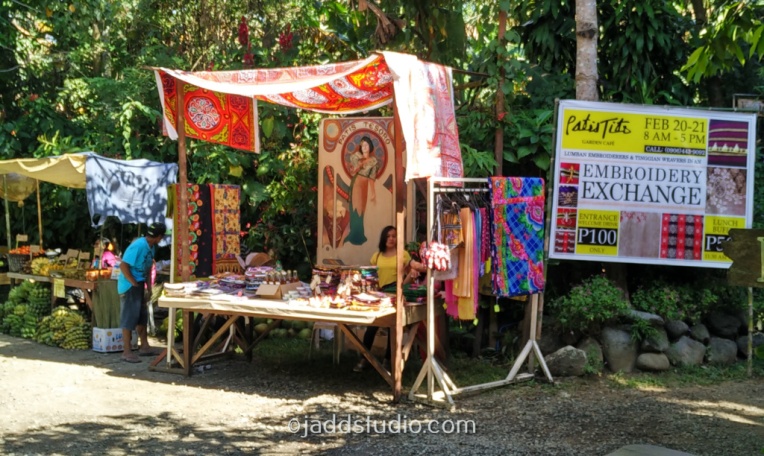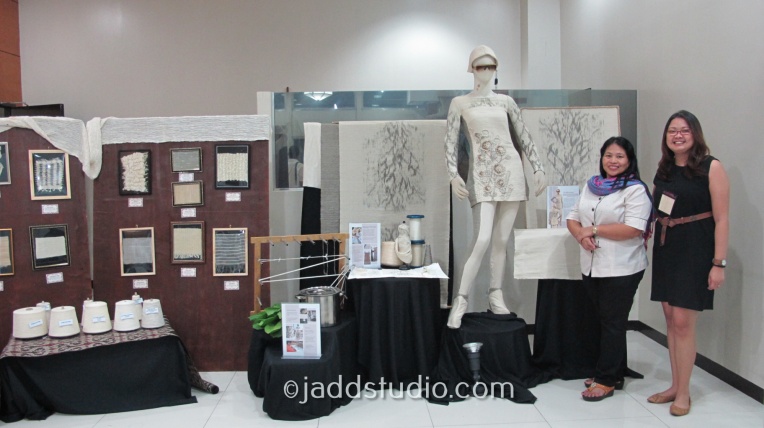It was time for another getaway and just a couple of days after our Natural Dyeing Seminar/Workshop at PTRI, we travelled to San Pablo, Laguna to join in the festivities at Patis Tito Garden Cafe where they had the so-called “Embroidery Exchange.” Patis Tesoro thought of having this event in her cafe after visiting the embroiderers last December 2015.

As mentioned in Patis Tito’s Facebook page, this embroidery exchange is the first ever collaborative encounter between the Tinggians of Namarabar, Peñarrubia, Abra and the embroiderers of Lumban, Laguna. This was held last February 20 and 21, 2016. I saw this as an opportunity to personally interact with the embroideries to see and experience their work.




